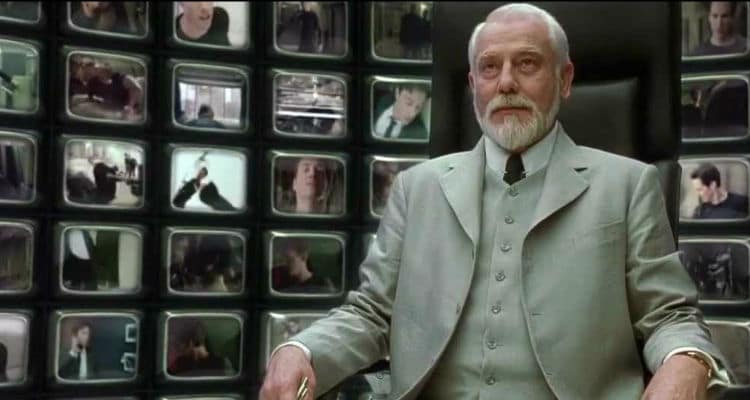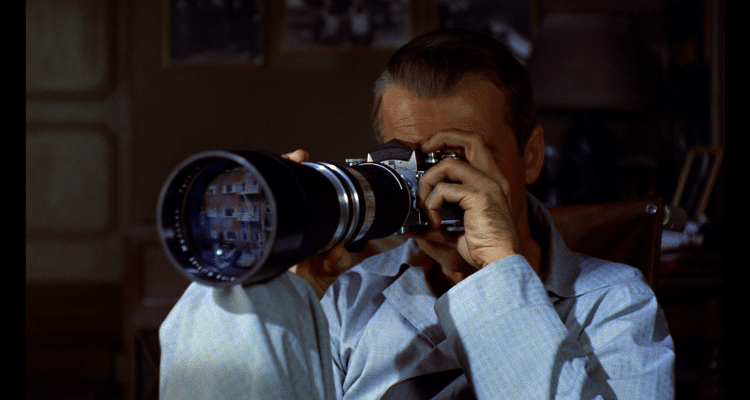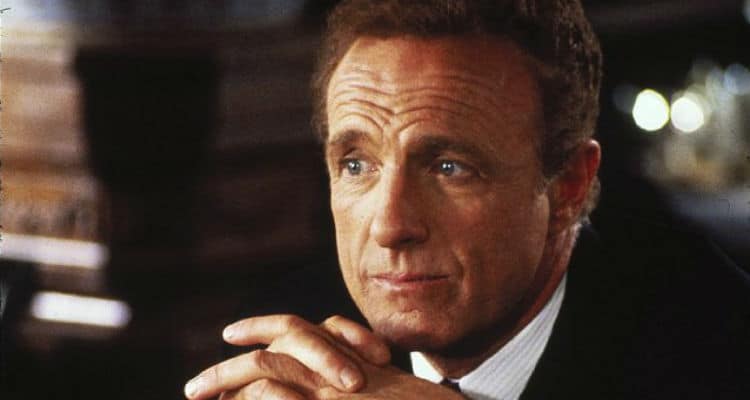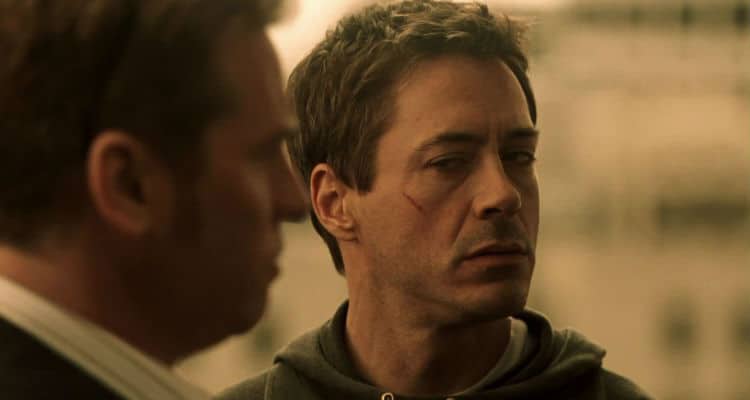To write omnisciently as a screenwriter often entails, for better or worse, including elements that may never show up onscreen: jokes in descriptions or insights into characters’ thoughts and histories that only a reader will ever truly experience and appreciate.
western” align=”LEFT”>This statement is unlikely to surprise anyone sentient, but film is a visual medium, and for that reason it often has to imply what written media can state from an all-knowing perspective: sadness, bad smells, cake texture etc. Short of characters loudly exclaiming exposition, what’s going through Ryan Gosling’s head as he weeps and the taste of Oh Dae-Su’s octopus are things you can only infer visually, while in text the author has the ability to outright tell us ‘Michelle Williams’ and ‘like intestines’.
western” align=”LEFT”>Yet many screenwriters still choose to write omnisciently. Whether or not it’s actually ‘good form’ to do so for the screen is contentious. Some do it; some eschew it.
western” align=”LEFT”>So, is it worth doing?
To Write Omnisciently Or To Write Photographically?
western” align=”LEFT”>
western” align=”LEFT”>That is the question, and looking at each extreme helps illustrate the different approaches. First, let’s look at a scene opening written photographically:
western” align=”LEFT”>INT. AUDITION WAITING ROOM
western” align=”LEFT”>Ten, maybe fifteen actresses, all in their twenties, all reading lines, rehearsing under their breath, filling the room with hushed voices. All similar builds, hair colours.
western” align=”LEFT”>A bored RECEPTIONIST stares ahead at her screen, ignoring her surroundings.
western” align=”LEFT”>In the corner, someone not rehearsing, not speaking, older than the others: SARAH (35). She just stares at the script in her hands. She’s calm, oblivious to the noise around her, until-
western” style=”text-align: center;” align=”LEFT”>VOICE (O.S.)
Miller? Sarah Miller?
It’s safe to say that there’s nothing in there that couldn’t be totally and directly represented were the excerpt to be filmed. Now, let’s take the same excerpt, only this time the writer has chosen to write omnisciently:
INT. AUDITION WAITING ROOM
Ten, maybe fifteen ACTRESSES, all in their twenties, all with a hunger for work so palpable it fills the room.
A RECEPTIONIST stares ahead at her screen. She’s endured this a million times before; she’s immune to it now.
In the corner, someone not rehearsing, not speaking, SARAH (35), staring at the script in her hands. She’s been at this a decade longer than the rest, has the tough skin and bitterness that go with it. She couldn’t tell you how or why she’s stuck to it, but right not nothing could break her concentration, nothing except-
VOICE (O.S.)
Miller? Sarah Miller?
Exaggerated Examples
Obviously, these are exaggerated examples, but a point worth noting is the fact that omniscient description, though criticised for failing to translate visually, often implies something photographic.
In the completely made up case above, for example:
- The actresses desire for work implies the atmosphere stated in the ‘photographic’ version.
- The fact that the receptionist has sat in a cacophonous waiting room a million times can’t be directly stated visually but implies her posture and expression.
- The bitterness and exhaustion that characterise Sarah after many years trying to act may well be difficult to see in that brief moment, but those words imply the manner of the character when they move, speak, interact.
They don’t translate; they implicate.
western” align=”LEFT”>For a less contrived example we can turn to Shane Black, a writer known for writing with an omniscient perspective. Take this excerpt from THE LAST BOY SCOUT:
western” align=”LEFT”>WEST LOS ANGELES, CALIFORNIA – DECEMBER 20
western” align=”LEFT”>Good morning, Mr. and Mrs. America, and all the ships at sea. Welcome to another lackluster morning in Southern California.Palm trees limp. Windless silence. 80 degrees at 8:00 am.
western” align=”LEFT”>CAMERA CRANES DOWN PAST a huge, rotting billboard. On the billboard, a girl in tight jeans. Grabbing her own butt. A surprised look on her face. Yes, honey, that’s your butt.
Again, aspects of the omniscient voice here won’t translate directly onto the screen in that moment:
- The fact this is just another day.
- The conversational tone of the description.
- The humour.
Nonetheless, there are implications here; implications about the way in which L.A. will be portrayed; implications about the tone of the film itself. Above all else, there’s a distinct style that benefits the reader.
But is this better than concise, visual writing? It’s genuinely quite a divisive question, and one to which respected writers and critics have drastically different answers. Robert McKee, for example, is firmly in the photographic camp:
We constantly discipline the imagination with this question: What do I see on the screen? The describe only what is cinematic.
This is the primary argument against choosing to write omnisciently: why waste words describing what can’t be recorded? Why write…
- ‘he’s lived a life of solitude, the kind of loneliness usually reserved for the worst criminals, the malodorous, and hermits’ when you could write
- ‘he sits at a table in the corner, alone’?
Now, there’s undoubtedly a point here, but it’s not as simple as ‘omniscient’ vs ‘photographic’. There are, as your neighbour’s basement will demonstrate, many ways to skin a cat, and an equal number in which to write omnisciently.
Grades of Omniscience
Omniscience itself doesn’t really come in grades, but its use does. There’s a scale, ranging from information that can’t be represented directly on-screen, but can easily be implied, to information that, short of an overly revealing voiceover, simply can’t be reproduced at all in the finished product.
We can illustrate this scale using several prominent screenwriters who, in their work at least, hold the opposite position to McKee; a scale from Goldman to Schrader.
Goldman – The Writer’s Voice
William Goldman has a habit that falls at the lower end of this scale: near the start of his screenplays, he often openly confirms a character to be the hero. In MISERY, for example, Paul Sheldon is introduced like this:
He’s the hero of what follows. Forty-two, he’s got a good face, one with a certain mileage to it. We are not, in other words, looking at a virgin.
He does something similar in THE PRINCESS BRIDE when Inigo and the Man In Black meet:
This is our two heroes meeting. They don’t know it yet; but that’s what it is.
This is a particular kind of omniscience in the sense that it demonstrates a deliberate self-awareness on the part of the writer, giving information that the audience will soon assume anyway, but giving it a minute or two ahead of time on the page, presumably for the benefit of the reader.
The fact that these characters are the heroes of their respective stories will definitely end up represented on-screen, just not as simply as Goldman states. As before, bringing in a writerly, omniscient voice can be seen to hint at visual specifics on-screen. In this case, a hero’s introduction might be afforded a bit more gravity than Groundskeeper 2’s, which could have implications for shooting or performance. Goldman is simply signposting it.
Black – The Character’s Voice
A step up from this is Shane Black (again). During the scene from LETHAL WEAPON in which Riggs is introduced comes this excerpt:
Riggs smiles at him innocently. Strokes the collie’s fur with one hand. With the other, he reaches into a paper sack and produces a spanking new bottle of Jack Daniels, possibly the finest drink mankind has yet produced.
What’s interesting here is the inclusion of an opinion within description, an opinion we can assume most likely belongs to Riggs, and one that is difficult to represent visually. For a reader, it perhaps implies Riggs enjoys a drink to a fault, while giving a good sense of the film’s tone. For the performer, it might indicate the way in which they handle the drink. For the audience, however, it’s something they will never experience directly.
Schrader – The Character’s Innermost Self
western“>At the top of the scale we have the introduction of Travis Bickle in Paul Schrader’s TAXI DRIVER:
western“>TRAVIS BICKLE, age 26, lean, hard, the consumate loner. On the surface he appears good-looking, even handsome; he has a quiet steady look and a disarming smile which flashes from nowhere, lighting up his whole face. but behind that smile, around his dark eyes, in his gaunt cheeks, one can see the ominous stains caused by a life of private fear, emptiness and loneliness. He seems to have wandered in from a land where it is always cold, a country where the inhabitants seldom speak.
western“>Again, you could argue that the ‘omniscient’ aspects in the excerpts have on-screen implications, but it’s unlikely that any viewer will conjure the image of the protagonist in a semi-mute Siberia after one look at De Niro’s face. Schrader’s decision to write omnisciently is pushed a little deeper and more abstract, pulling the text further from ‘what is cinematic’ and giving a level of insight into Bickle that is, at this early stage at least, very difficult to communicate.
western“>In fact, stepping up a few rungs from his place at the bottom of this scale, Goldman similarly chooses to write omnisciently when introducing Butch Cassidy in BUTCH CASSIDY AND THE SUNDANCE KID:
Thirty-five and bright, he has brown hair, but most people, if asked to describe him, would remember him blond. He speaks well and quickly, and has been all his life a leader; but if you asked him, he would be damned if he could tell you why.
Neither of those things are possible to represent without scenes in which they actually happen, both of which would be odd. Like Schrader, Goldman writes on a level far beyond the visual, and, more to the point, far beyond what the visual can reasonably imply at a glance. nonetheless, the image it paints of the character is undoubtedly true to screen.
So… What’s the problem?
western” align=”LEFT”>In retrospect, both Schrader and Goldman’s introductions are spot on – they sum up their respective characters accurately and in an engaging style – but in a form that values clarity and concision, the question becomes: could the same end result not have been achieved in scenes written photographically?
western” align=”LEFT”>It’s a battle between style and practicality, one which boils the debate down to this: the value of the screenplay as a document to be read. Is there merit in including information or jokes that are solely for a reader’s benefit in a document ultimately designed for a different purpose?
western” align=”LEFT”>Well, a screenplay will always be read before it’s made, so there’s undoubtedly some value there. Equally, however, an omniscient approach comes with its risks – it’ll be read, but it’ll be read with viability in mind as well as quality, and filming the omniscient, if the presence of omniscience is consistent, is rarely viable.
The answer, then, lies in Shane Black’s middle ground (good name for a bar). The style is such that the necessity for something to be or not to be on-screen is always relatively clear. Take this tiny excerpt from KISS KISS BANG BANG, as Harry Lockhart is running from the cops:
UP AHEAD: People, milling outside a doorway. Sipping coffee. AA meeting on a break? He slows to a brisk walk.
That question – ‘AA meeting on a break?’ – may not seem it, but it’s another example of Black’s decision to write omnisciently: on-screen there can be no indication either way if the image is going to be uncertain enough to warrant a question (and a question from who, exactly? Harry? The audience?)
In this case, it doesn’t matter, because, given the nature of the scene – a man desperately fleeing the cops – it’s clear that its purpose is to emphasise the fact that, as Harry runs, he (and the audience) catches glimpses of things, people, without having time to fully register what or who they are. This, in turn, helps justify the following scene in which Harry unwittingly walks into an audition. Simply put: it’s obvious it doesn’t need to be filmed precisely.
In this sense, holding the view that it’s never beneficial for a screenwriter to write omnisciently does a disservice to the potential reader. What’s important isn’t whether or not it’s there. What’s important is whether, if it is there, the omniscient voice leaves a potential filmmaker questioning how on earth the can represent or even imply what’s on the page, or whether it serves to complement the scene or the character in a way that deftly implies a visual equivalent.
western” align=”LEFT”>If the latter, surely it can only enhance the experience?
What did you think of this article? Share it, Like it, give it a rating, and let us know your though in the comments box further down…
Struggling with a script or book? Story analysis is what we do, all day, every day… Check out or range of services for writers & filmmakers here.
Get *ALL* our FREE Resources
Tackle the trickiest areas of screenwriting with our exclusive eBooks. Get all our FREE resources when you join 60,000 filmmakers on our mailing list!





If you are a professional screenwriter who has Directors who like your work (or you are a writer/director/producer like Shane Black), you can write with a more omniscient style. You can bend and even break screenplay formatting rules, story structure etc. None of that really matters anymore, it’s all about story and writing something the director and actors really like.
If you are starting off, trying to break in to the business and you are sending your scripts off to screenplay festivals, competitions, and production companies unsolicited, you are highly likely to get a bored intern or judge who’s going through hundreds of scripts by the numbers, just itching for a reason to ditch the script so they can get through them all as quickly as possible.
The likelihood of them tossing the script in the bin by page ten if you write omnisciently is, thereofre (in my opinion/experience anyway) quite high.
However, here’s the catch. You want your script to stand out. If you write 100% photographically you run the risk of looking like all the other scripts or having dull scenes. I think the trick in that case is to show a bit of creative flair selectively. Choose when to add an omniscient element to really drag the reader into the moment but don’t overdo it.